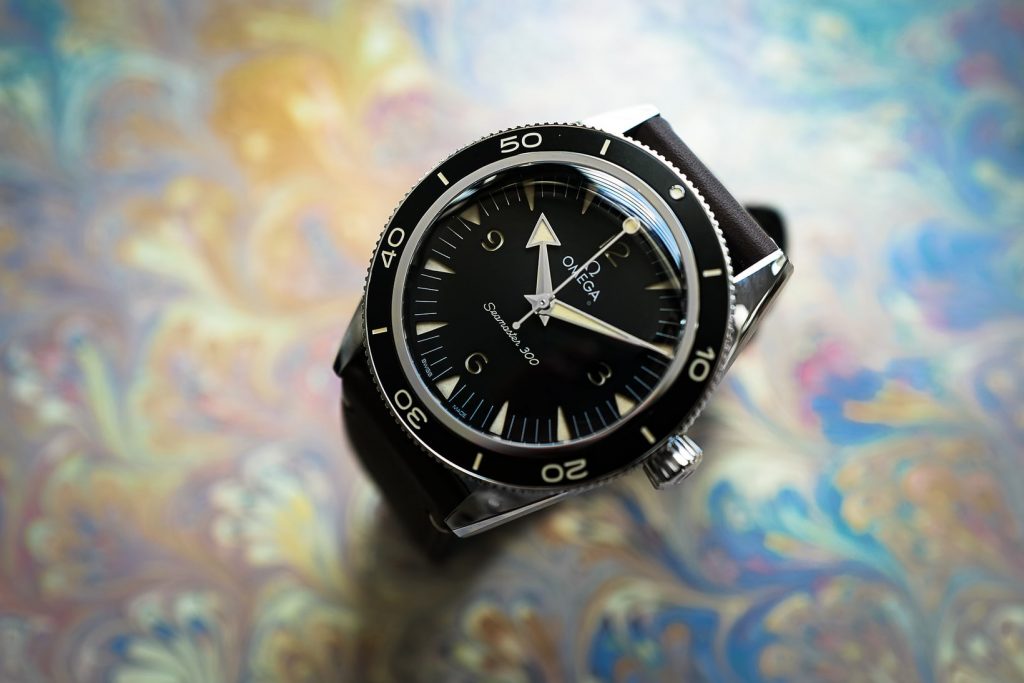Despite its aquatic name, the super clone Seamaster wasn’t always a dive watch. It debuted in 1948 in a paltry (by modern standards) 34mm case size. In 1957 Omega released the Swiss movement copy Omega Seamaster 300 – a direct competitor to watches like the replica Rolex Submariner and Blancpain Fifty Fathoms, featuring a mix of Arabic numerals and painted markers and – most notably – a rotating elapsed-time bezel. The Seamaster 300 became the blueprint for all future Seamaster divers. It paved the way for the 300m line – which featured prominently on the wrist of one particular MI6 agent.

When the vintage-inspired craze came to prominence in the mid-2010s, super clone Omega released a modern-meets-retro Seamaster 300 with faux-patina. At the beginning of this year, rumors swirled about an update to the collection. In March, Omega delivered a complete refresh to the Seamaster 300 line. We wrote about those waterproof Omega fake watches on release day, and the consensus among readers was positive. But those were press photos. We hadn’t yet seen the watches in person. Now we have.
I recently spent four days with all three of the new Seamaster 300 variants: The black dial in steel (on a strap), the blue dial in steel (on a bracelet), and the brand spanking new super clone Seamaster 300 Bronze Gold. Other than some material differences in the Bronze Gold, all three watches are effectively the same in design and function. And they’re pretty dreamy for anyone who wants the throwback look without chasing down a vintage piece.

The dial layout evokes the Seamster 300s of old. The Seamaster wordmark has moved from the top of the dial to the bottom so as to read high quality copy Omega Seamaster 300. In doing so, fake Omega was able to clean up and simplify the dial. On the previous version, text indicated the chronometer rating and co-axial movement – all of that has been shipped to the caseback.
The dial is a Panerai-style, double-layer sandwich. The top layer – in black – has cut-outs for the markers and numerals atop the fully lumed faux-patina bottom layer. The effect is more subtle than you might think. If your eyes are like mine, to fully appreciate the dimensionality you’ll have to bring the watch close to your face, as if reading the fine print on a mortgage agreement.
The broad arrow hour and minute hands return here, but the seconds hand on the steel versions has transformed from an arrow to a lollipop. There’s historical precedent for the lollipop seconds hand (Omega replica UK even used it on the Seamaster 300 from Spectre) and fans can debate whether it’s a return to glory. To my eyes, the lollipop end looks a little heavy and appears to be weighing down the seconds hand, but then again I’m the guy holding the watch right up to his face. Your results may vary.
The new bezel, on the other hand, is indisputably better. The bezel on the steel models is reminiscent of the gilt styling of the Tudor Black Bay 58. It’s now made of oxalic anodized aluminum as opposed to ceramic – which gels with the throwback vibe. Previous iterations of the 300 had a monochromatic bezel, but this one features the same aged patina found on the dial. The entire bezel is lumed as well. The numerals glow in blue to match the dial, while the bezel pip glows green to match the minute hand. For those wondering, the bezel action is A-ok.
The faux aging is more pronounced in the metal than in press photos and is a decidedly darker shade than the recently discontinued model. It’s a warm almost peach (as in Crayola peach) color in daylight, and in darker environs, it takes on the moody cast of wet sand.
The back of the Swiss made copy Omega watch showcases the METAS-certified Omega Master Co-Axial caliber 8912. While it’d be nice to have the option of a closed caseback with the Seamaster emblem engraved (mostly to shave off some thickness), I do think this movement is worthy of exhibition.

